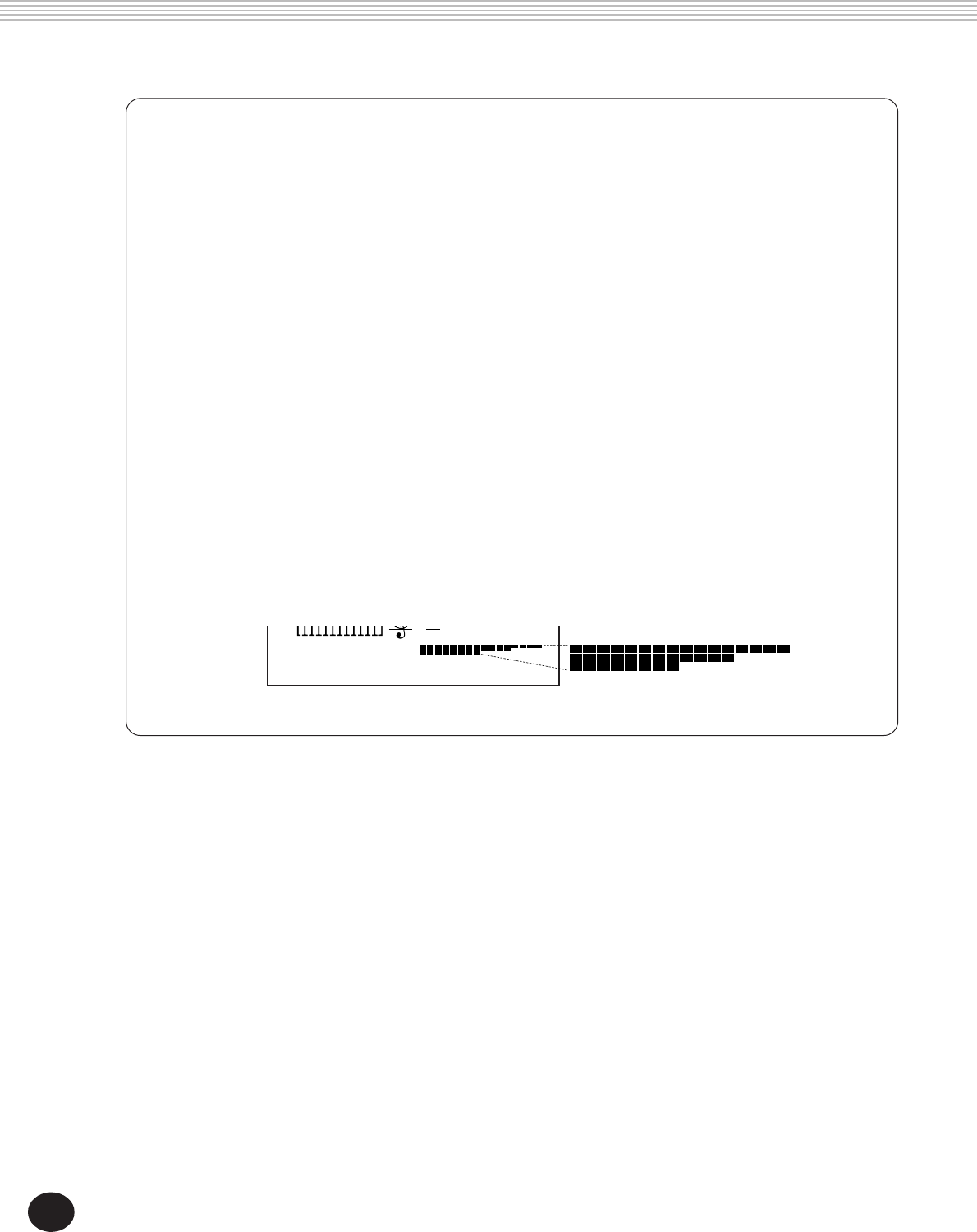
70
HINT — Using Spaces
If your chord progressions are not long and the maximum memory space for chords isn’t very important to
you, you can use the spaces between recorded blocks to good advantage. (Keep in mind that spaces have no
effect during playback; the EZ Chord function automatically skips the space or spaces and plays the next
chord.)
To record a space:
Press the + button without recording a chord.
Some advantages to using spaces:
• Put one or two spaces between recorded chord blocks — for example, between the different sections (verse,
chorus, bridge, etc.) of your song. This gives you a clear visual indication of where you are in a song, and
makes it easier to perform the chord changes.
• Regardless of the musical genre — rock, pop, country, jazz, and even much contemporary music — the
structure of most songs and music, in terms of length in measures, is based on the number four and its
multiples. Examples of this include four- and eight-measure melodic phrases, the popular “twelve-bar” blues,
and the sixteen-measure length of verses and choruses in many pop songs and jazz standards.
What does this have to do with “spaces”? If your chord progression follows this kind of structure closely, you
may want to group the chord changes for each section in four-, eight, twelve- or sixteen-block groups. For
example, the first song in the illustration below shows a sixteen-block group, followed by a group of twelve,
then one of eight.
3 040-
16 Blocks
12 Blocks
8 Blocks
AUTO ACCOMPANIMENT — THE STYLE MODE
68


















